
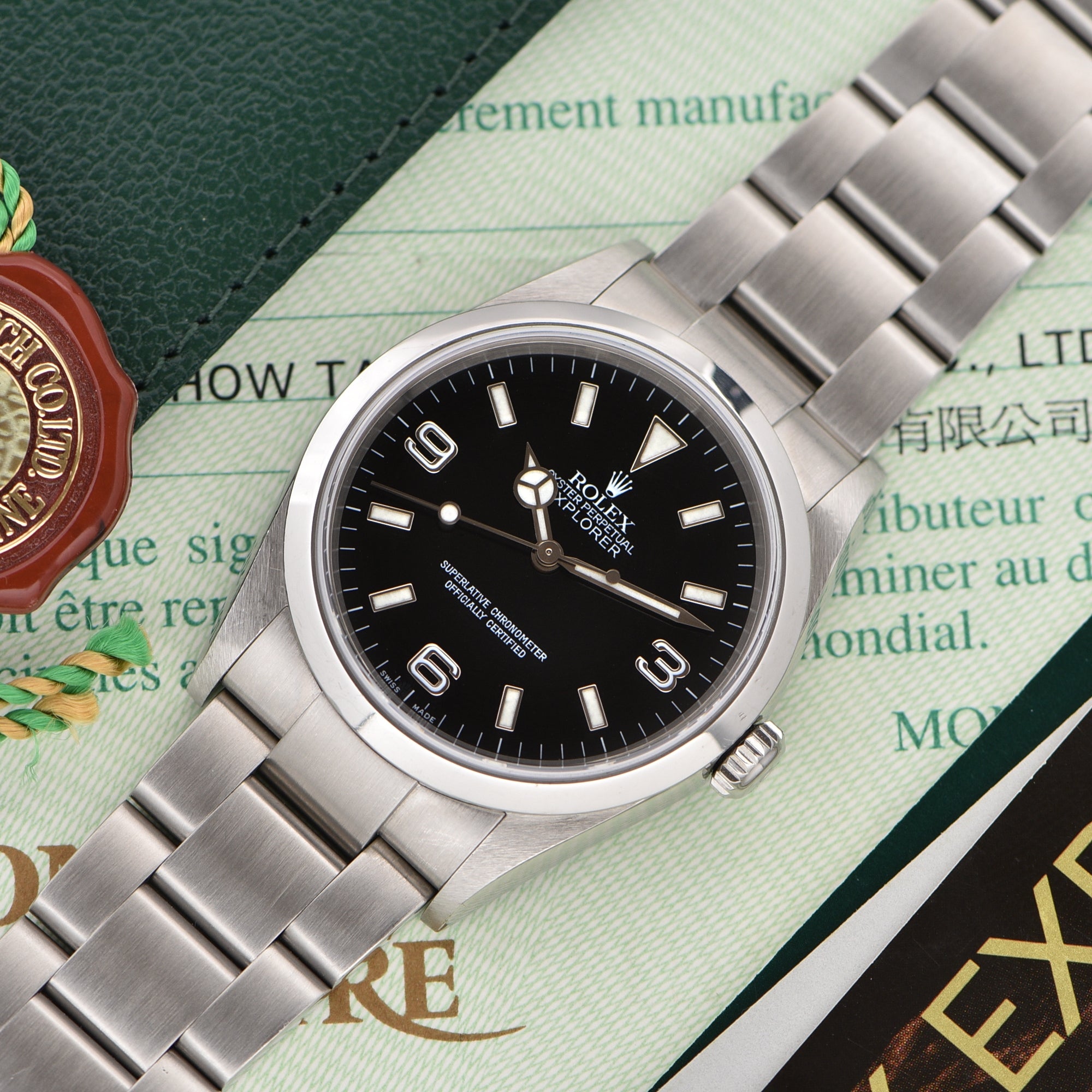
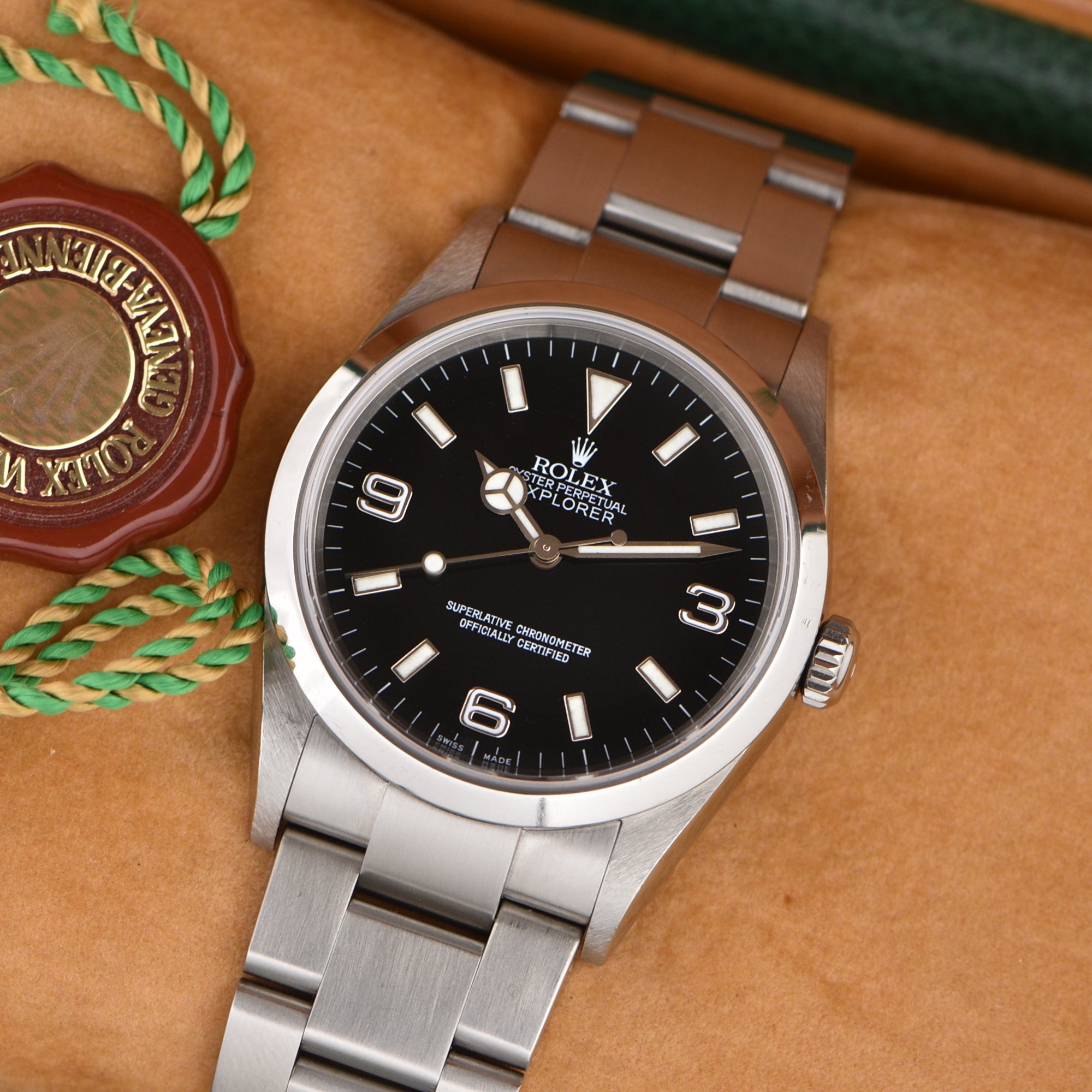
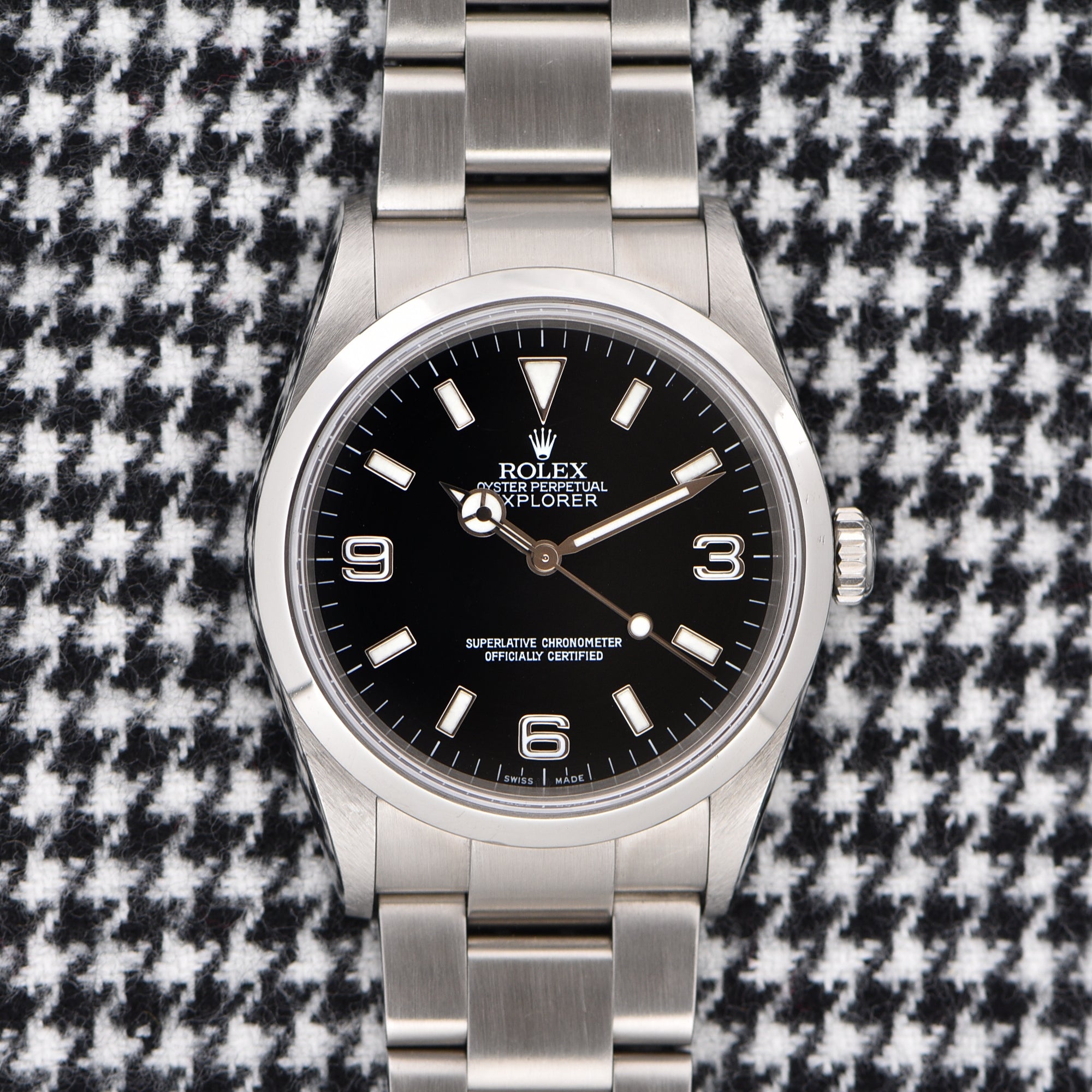
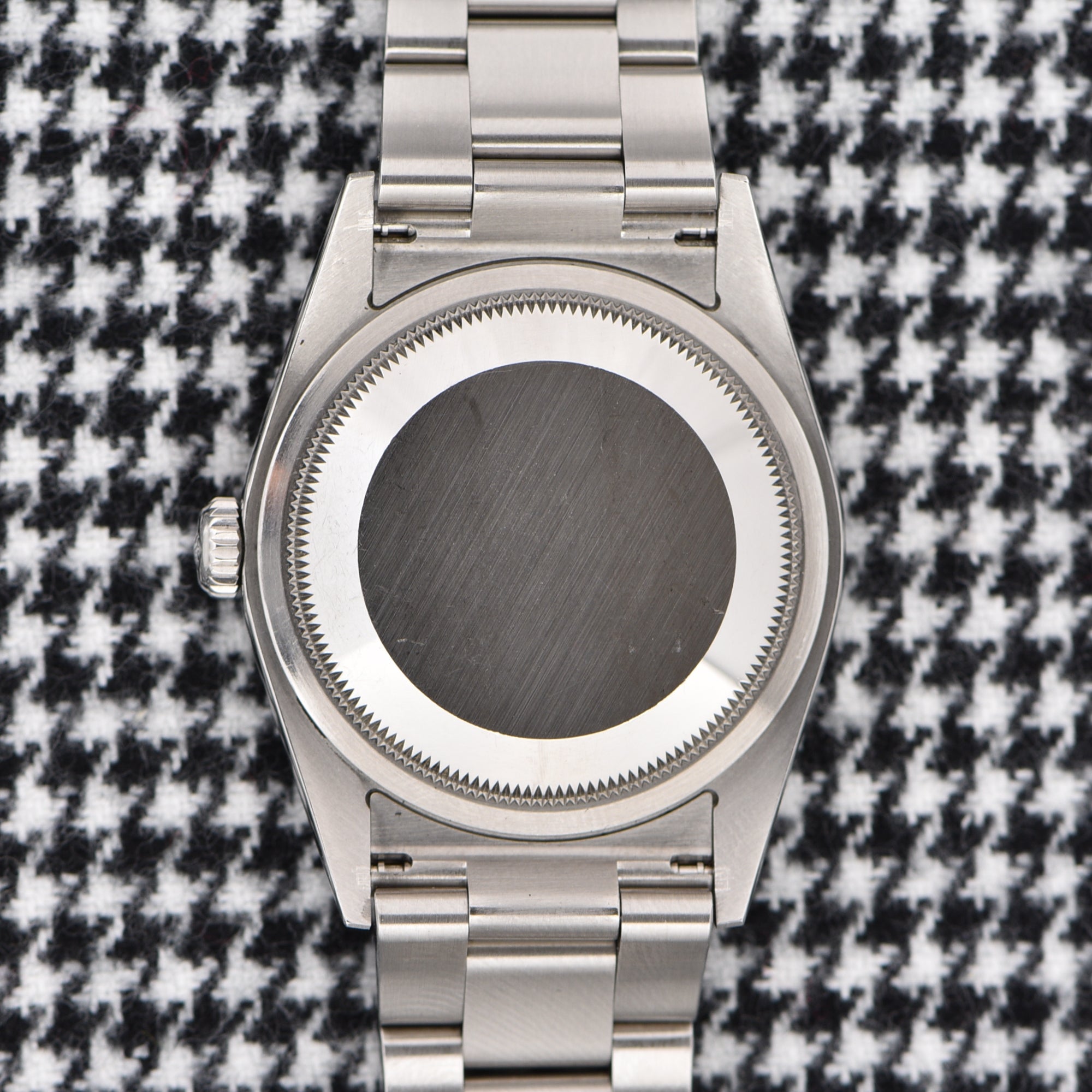
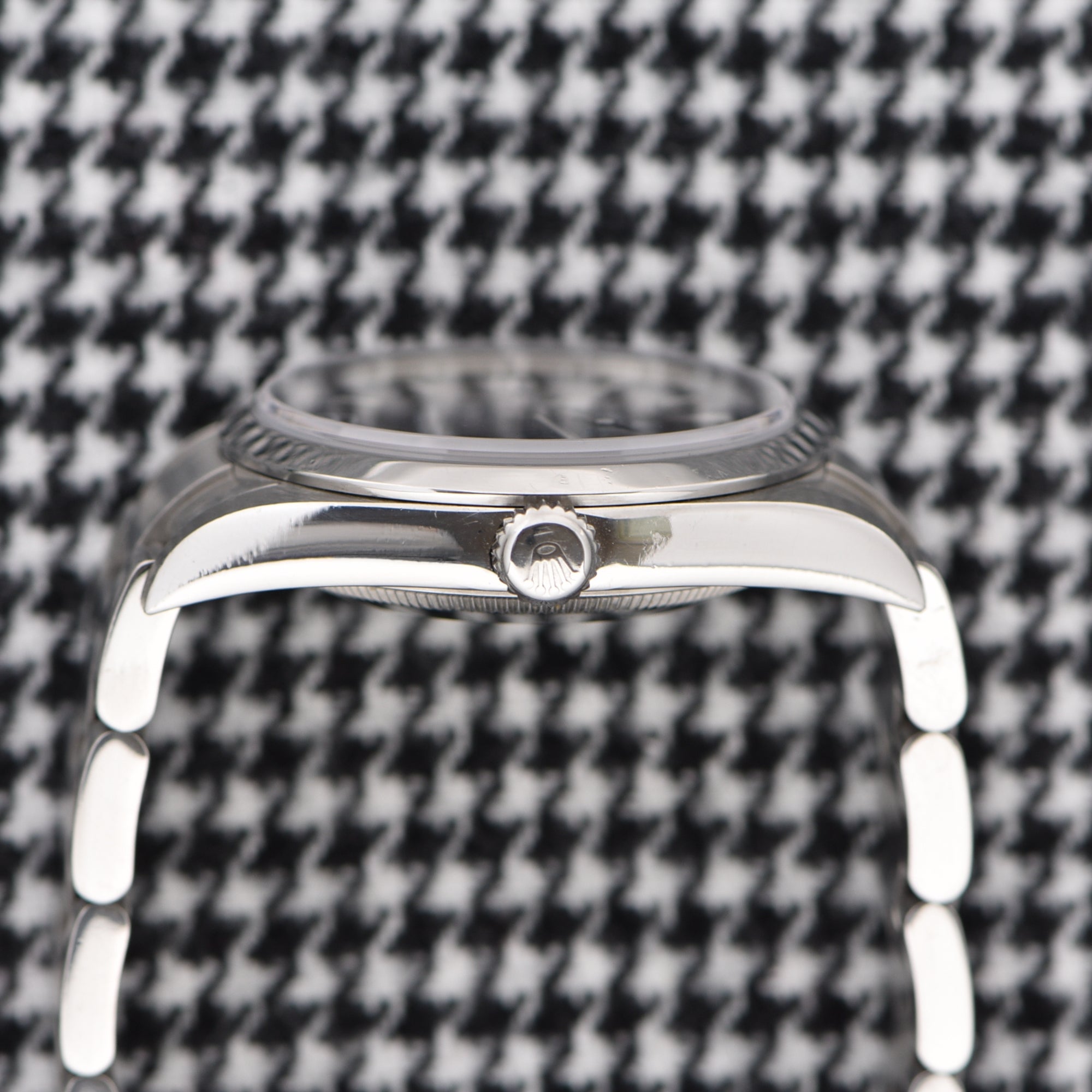
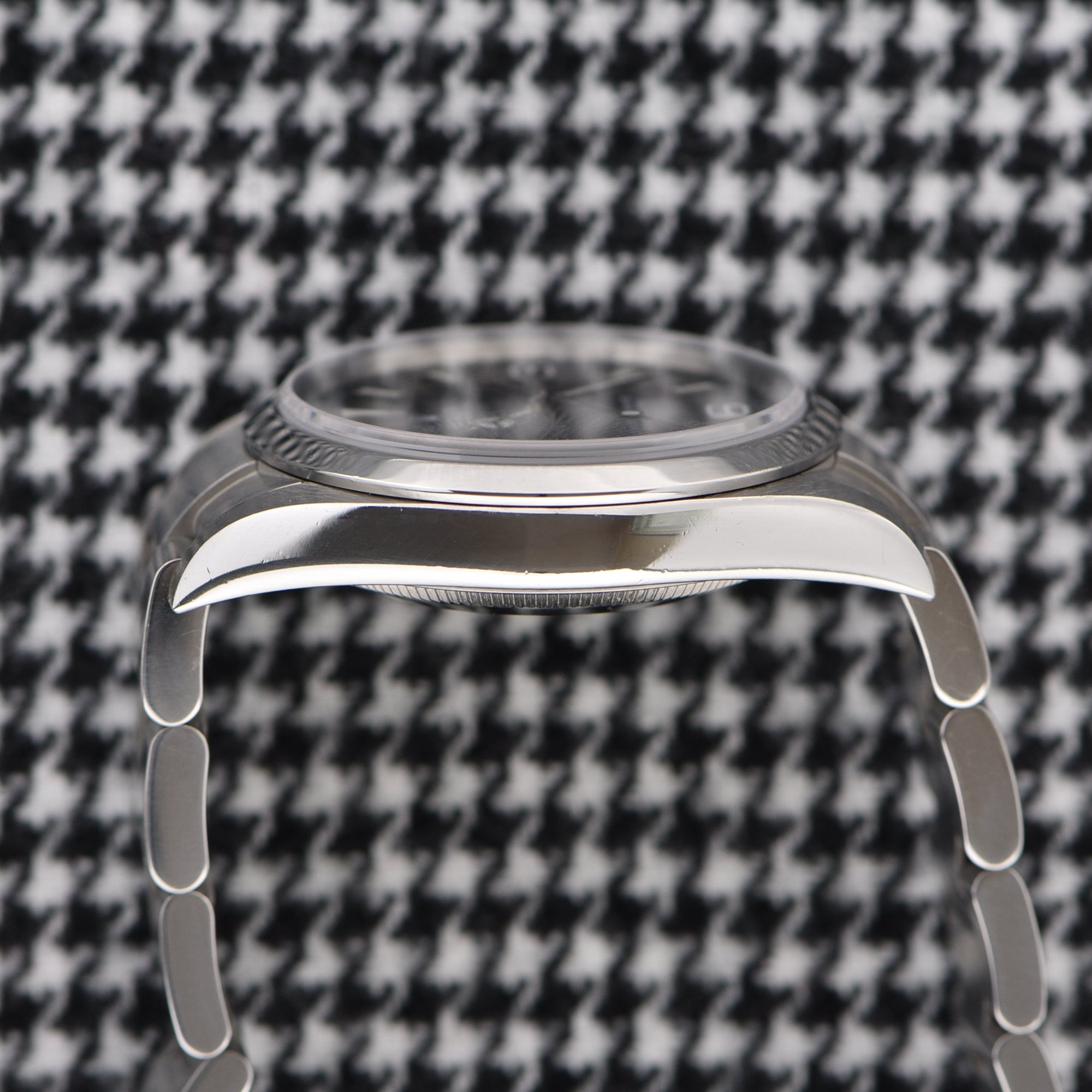

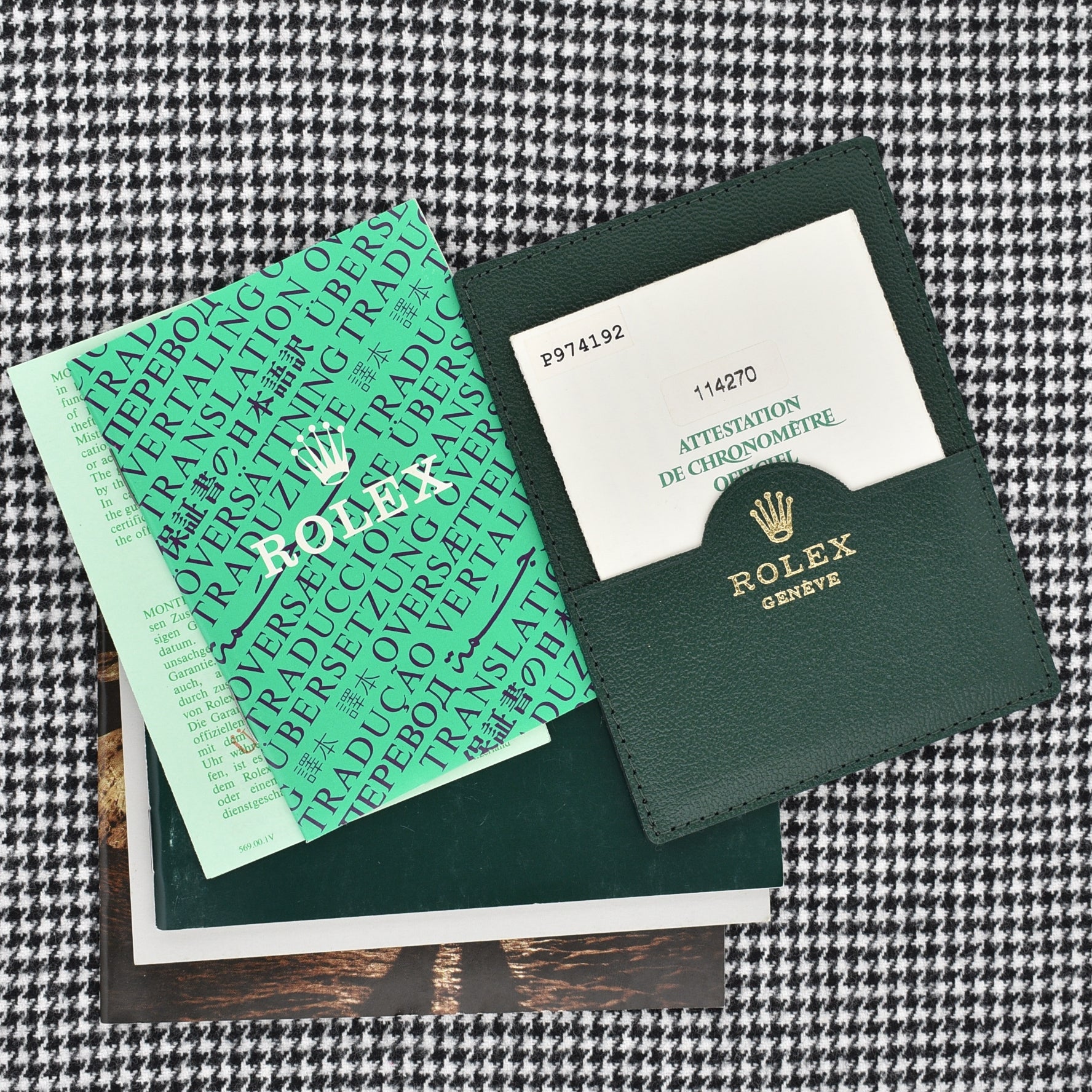
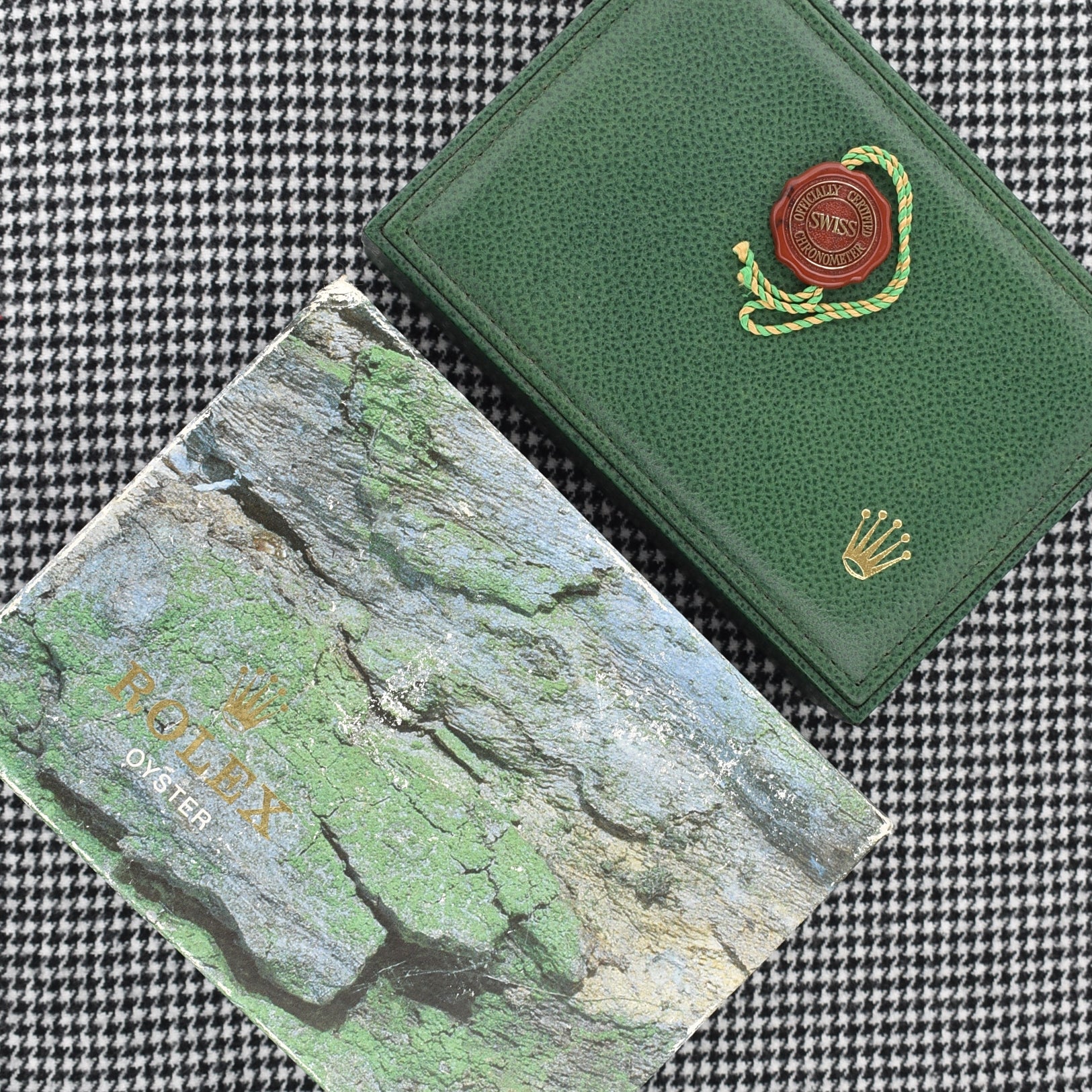

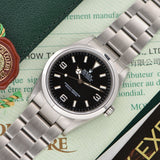
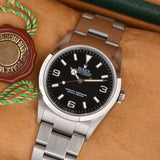
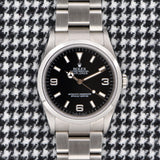
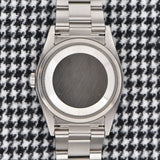
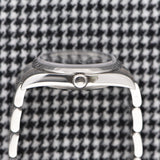
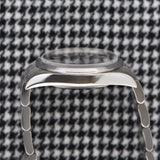

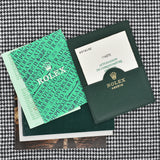
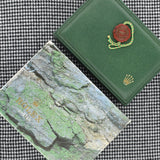
2000 Rolex Explorer 1 - Box & Papers
- Reference 114270
- Boxes, Booklets, Booklet Holder, Certificate, Hangtag
- Specifications
- The Story
- The Brand
Year: 2000
Model: Explorer 1
Case Diameter: 36mm
Lug to Lug: 43mm
Case: Stainless Steel
Dial: Black
Movement: Automatic
Condition
The watch has signs of a light polish but still has nice and even lugs. The bracelet is large with very little wear. The watch has its original logo stamped crystal. The watch comes with all the booklets, papers and inner/outer box including the red hangtag.
In the mid 1950s, Rolex introduced the caliber 1030, their first complete in-house built and designed movement. This new movement required a new generation Explorer, leading to the introduction of the reference 6610 in 1956. The 6610 was slimmer than its predecessors, with a 36mm case design and a flatter caseback. The dials were all glossy black with gold text, and some rare versions had a depth rating.
In 1963, Rolex introduced the Explorer 1016, one of the longest running sports watch references. Production ceased in 1989, but minor changes occurred, including the introduction of the caliber 1560, a chronometer-rated movement, and the 1570, which added a hacking feature. The 1016s were also rated to a slightly deeper depth rating at 100m.
One of the biggest changes in the 1016's lifespan was the shift from Radium to tritium for luminous materials on the hands. The 1016 Explorer featured matte dials with text printed onto the dial surface.
Towards the end of the 1980s, Rolex introduced the next generation Explorer, the reference 14720. This watch replaced acrylic crystal with scratch-resistant sapphire glass, giving it a more modern feel on the wrist. The dial replaced painted numerals with white gold numbers filled with luminous material, initially tritium, and then luminova for lume. The reference 114720 was introduced in 2000, powered by the 3000 series movement.
Wilsdorf & Davis was initially a watch importer, but by 1908, Wilsdorf had registered 'Rolex' as a trademark. The name was chosen after trial and error, with some believing it was taken from the phrase 'horological Excellence' or because the word sounds like a watch being wound. Wilsdorf was aware of the power of branding and began a long campaign to get the new company name on the watches he exported. The relationship between Rolex and Aegler started the same year that Wilsdorf & Davis set up the business, placing the largest order for wristwatches ever seen. Wilsdorf was attracted by Aegler's commitment to the highest quality, as their movements were extremely accurate and small. In 1910, one of Rolex's models won a First Class Chronometer Certificate from the rating office in Bienne, Switzerland, and in 1914, another piece became the first ever wristwatch to be granted a Class A Chronometer Certificate from the Kew Observatory in England, the only non-marine timepiece to ever achieve it. The firm of Wilsdorf & Davis became synonymous with a commitment to uncompromising excellence.
WWI in 1914 led to the rebranding of Wilsdorf & Davis as Rolex in 1915. The British government imposed a 33.3% tax on luxury goods, forcing Rolex to relocate to Bienne. Despite the war, the wristwatch proved its utility, as it was used by soldiers during combat and in the field. Rolex produced trench watches, using Aegler's small movements for wearability. By the end of the war, wristwatches became a utilitarian accessory for men. In the years between the wars, Rolex asserted its independence, partnering with Carl F. Bucherer to resist the Federation of Swiss Watch Manufacturers. In 1926, Rolex introduced the Oyster case, making wristwatches waterproof, dustproof, and robust. Wilsdorf capitalized on this innovation by installing Rolex Ambassadors, or 'Testimonies', with celebrities as a marketing masterstroke.
During WWII, Switzerland retained its neutrality, meaning that it was one of the few countries not forced to shut down watch manufacturing to supply the war effort. As a result, by the end of hostilities, the Swiss watch industry was way ahead of other nations. Rolex truly came of age in the 1950s by launching some of the most enduring legends in watchmaking, such as the Explorer, Submariner, GMT-Master, Day-Date, and Milgauss.
The quartz crisis of the 1970s and 80s forced the company to change tactics but ultimately repositioned itself as the purveyor of the ultimate luxury lifestyle. Today, the name Rolex is synonymous with refinement, opulence, and personal accomplishment. The Rolex brand as we know it today is the byproduct of an unrelenting drive for excellence and over a hundred years of refinement and development, all in pursuit of the brand’s singular goal of making the world’s best wristwatch.
2000 Rolex Explorer 1 - Box & Papers
Authenticity Guaranteed
All our watches are carefully inspected to insure and guarantee the authenticity.
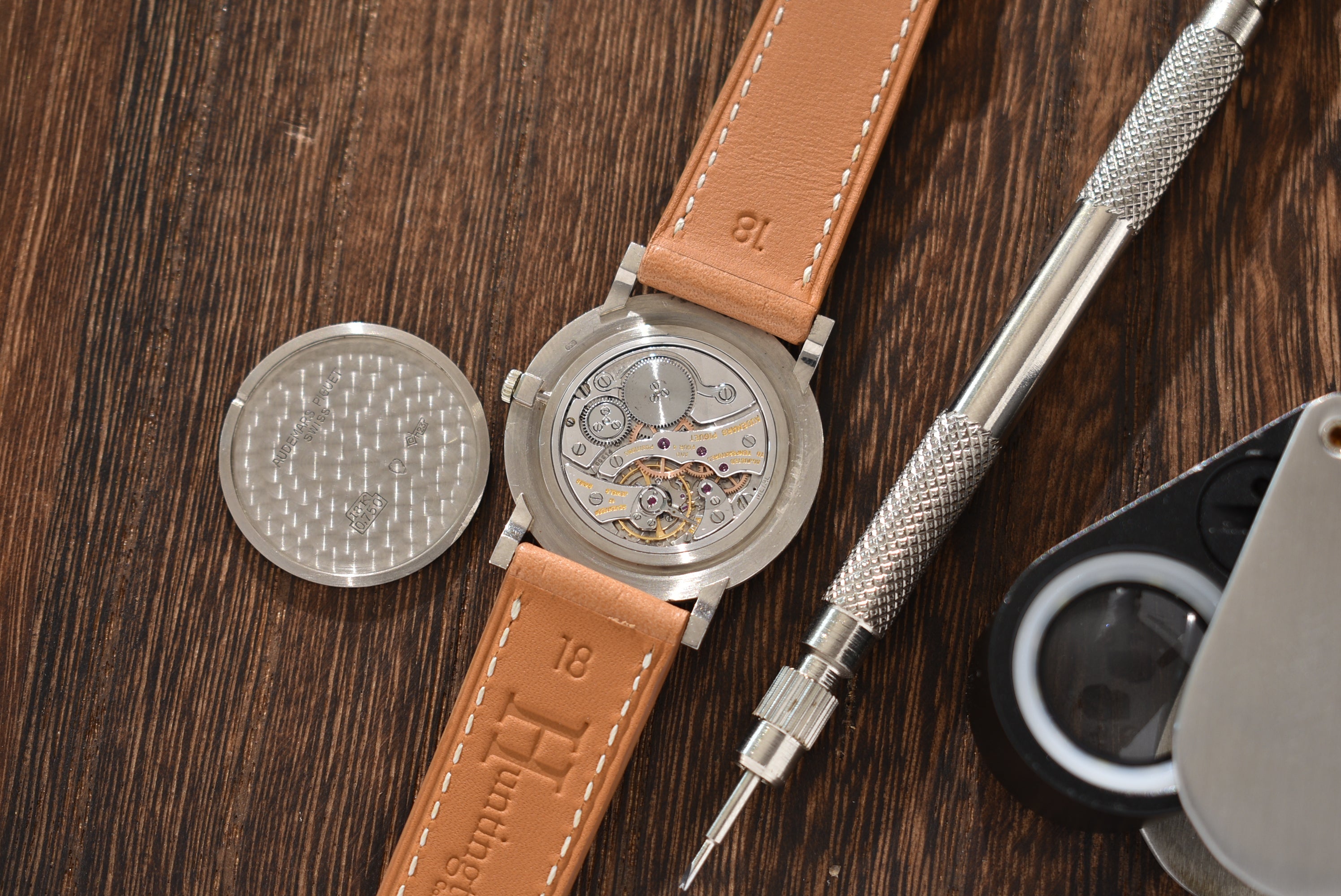
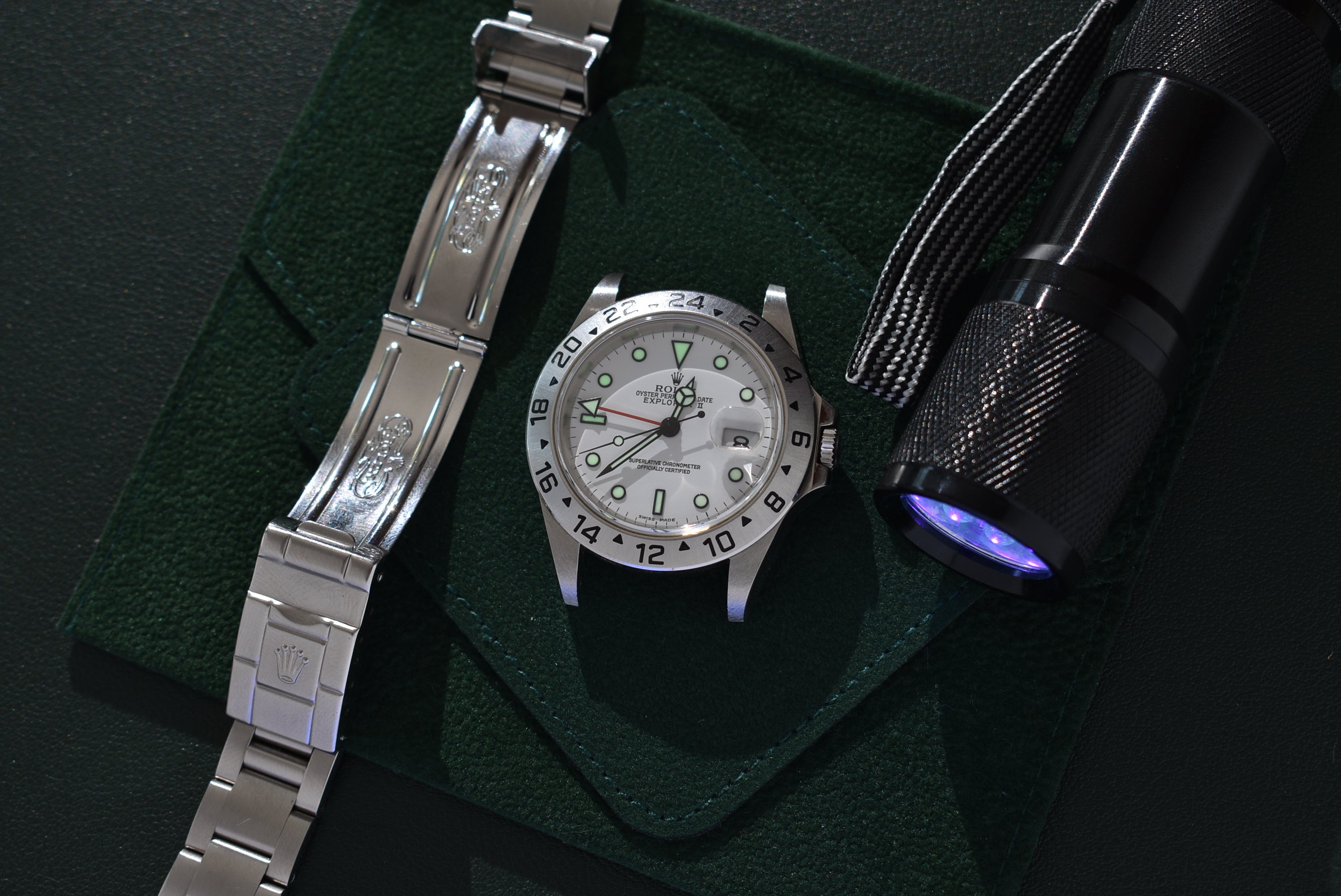
The Details
All our watches are scrutinized during inspection to make sure our descriptions are as accurate as possible.
- Related products
- Recently viewed
